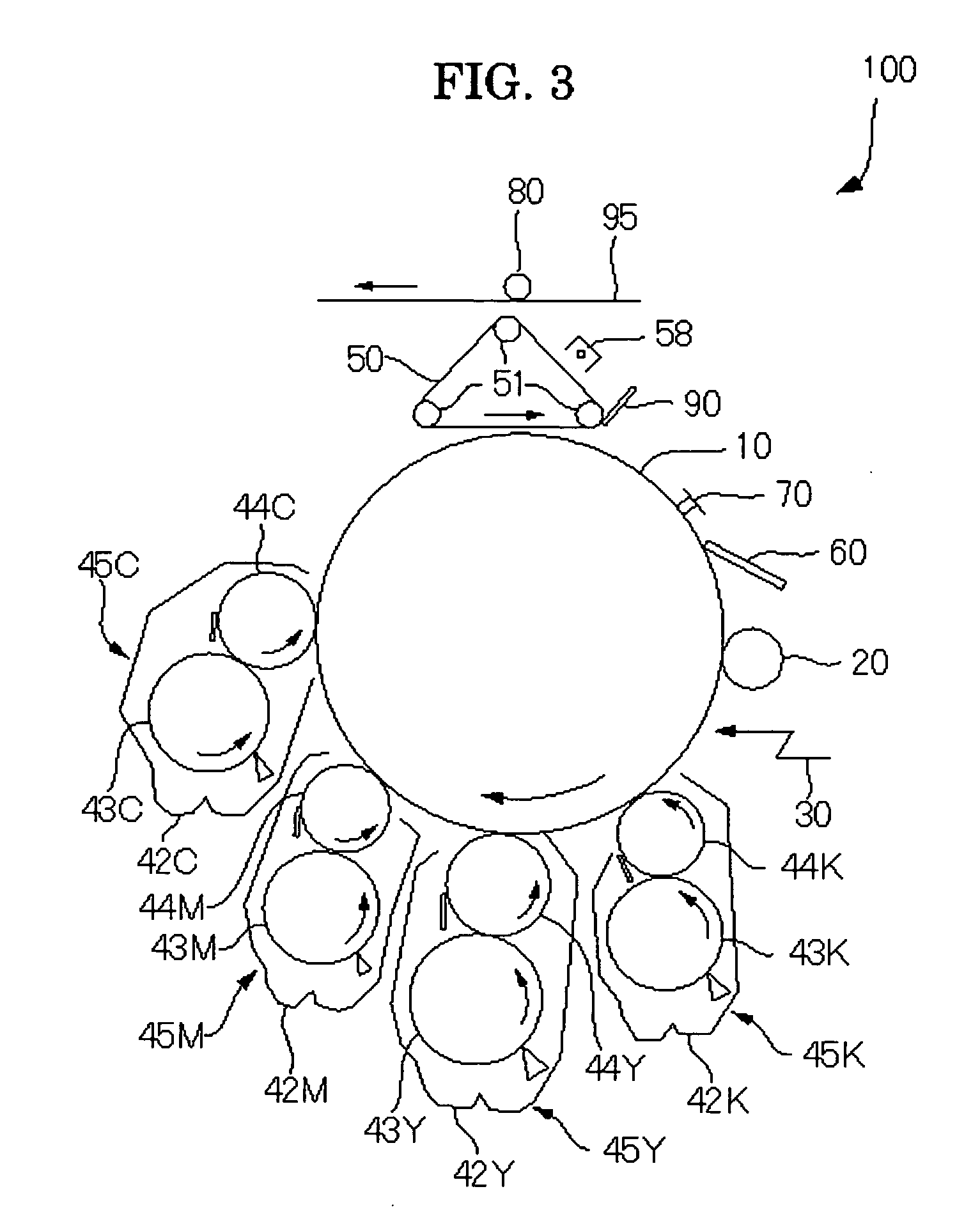Toner, image forming apparatus using the same, and image forming method
a technology applied in the field of toner and image forming apparatus, can solve the problems of high cost, abnormal images brought about by such a toner-fixed aggregate, and loss of image color at that portion into white color
- Summary
- Abstract
- Description
- Claims
- Application Information
AI Technical Summary
Benefits of technology
Problems solved by technology
Method used
Image
Examples
example 1
[0191] An example of a toner produced by polymerization will be described.
[0192] To a reaction vessel provided with a stirrer and a thermometer, 683 parts of water, 11 parts of sodium salt of the sulfuric acid ester of methacrylic acid ethylene oxide adduct (ELEMINOL RS-30, manufactured by Sanyo Chemical Industries, Ltd.), 80 parts of styrene, 83 parts of methacrylic acid, 110 parts of butyl acrylate, 12 parts of butyl thioglycollate, and 1 part of ammonium persulphate were poured, and stirred at 400 rpm for 15 minutes to obtain a white emulsion. The white emulsion was heated, the temperature in the system was raised to 75° C. and the reaction was performed for 5 hours. Next, 30 parts of an aqueous solution of 1% ammonium persulphate was added, and the reaction mixture was matured at 75° C. for 5 hours to obtain an aqueous dispersion liquid of a vinyl resin or copolymer of styrene-methacrylic acid-butyl acrylate-sodium salt of the sulfuric acid ester of methacrylic acid ethylene ox...
example 2
[0220] Next, an example of a toner produced by kneading and pulverizing will be described.
[0221] In a dropping funnel, 15 mol of styrene as an addition polymerization reactive monomer, 5 mol of butyl methacrylate, and 0.2 mol of t-butylhydro-peroxide as a polymerization initiator were placed. To a flask equipped with a stainless stirrer, a flow-down condenser, a nitrogen inlet tube, and a thermometer, 15 mol of fumaric acid as a monomer reactive to both addition polymerization and polycondensation, 5 mol of anhydrous anhydrous trimellitic acid as a polycondensation reactive monomer, 5 mol of bisphenol A (2, 2) propylene oxide, 4 mol of bisphenol A (2, 2) ethylene oxide, and 6 mol of dibutyl tin oxide as an esterified catalyst were poured and stirred in an atmosphere of nitrogen at 135° C. while fall in drops of the preliminarily prepared mixture of the raw materials for addition polymerization reaction from the dropping funnel in 5 hours. After the dropping, the droplet was matured...
example 3
[0251] A toner and a developer were produced in the same manner as Example 2 except that the yellow toner pigment was changed to C.I. pigment yellow 155.
PUM
 Login to View More
Login to View More Abstract
Description
Claims
Application Information
 Login to View More
Login to View More - R&D
- Intellectual Property
- Life Sciences
- Materials
- Tech Scout
- Unparalleled Data Quality
- Higher Quality Content
- 60% Fewer Hallucinations
Browse by: Latest US Patents, China's latest patents, Technical Efficacy Thesaurus, Application Domain, Technology Topic, Popular Technical Reports.
© 2025 PatSnap. All rights reserved.Legal|Privacy policy|Modern Slavery Act Transparency Statement|Sitemap|About US| Contact US: help@patsnap.com



